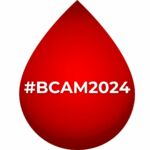DVT/PE in Orthopedics
- In orthopedics, joint replacement surgery is becoming more common. Orthopedic surgeons performed about 520,000 hip replacements and about 581,000 knee replacements in 2006.
- DVT is widely recognized as a major risk factor facing patients who undergo total hip arthroplasty and total knee arthroplasty, or THA and TKA.
- Without prophylaxis, up to 80 percent of orthopedic surgical patients would develop DVT, and 10 to 20 percent would develop PE.
- DVT and subsequent PE remain the most common cause for emergency re-admission and death following joint replacement.
Key Survey Findings among THA/TKA Surgeons: General DVT/PE Prophylaxis Preferences
- 99% of THA/TKA surgeons surveyed report routine use of DVT/PE prevention practices for most THA/TKA patients.
- 71% of surgeons surveyed prefer AAOS guidelines
Key Survey Findings Among THA/TKA Surgeons: DVT/PE Prophylaxis Practices/Perceptions
- DVT/PE prevention practices reported by THA/TKA surgeons surveyed vary widely: 70% pneumatic compression, 69% ambulation, 58% compression stockings, 47% LMWH, 28% warfarin, 15% LMWH with transition to warfarin, and 14% aspirin.
- More than half (53%) of surgeons surveyed say warfarin is moderately difficult to use and 14% say warfarin is very difficult to use. 59% of surgeons surveyed say that LMWH is not very difficult to use, and 23% say it is not at all difficult to use.
- On average, 38% of surgeons refrain from using warfarin, and 18 percent shorten treatment time with warfarin due to perceived therapeutic barriers, including: INR monitoring (95%), bleeding (64%) and potential drug interactions (61%).
- On average, 29 percent of surgeons say they refrain from using low molecular weight heparin, and 16 percent shorten treatment time due to perceived therapeutic barriers, including bleeding (78%) and patient difficulty with injection (61%).
Key Survey Findings Among THA/TKA Surgeons and Patients: Information Provision
- 97% of surgeons surveyed report they provide DVT risk information to THA/TKA patients all or most of the time.
- THA/TKA patients say doctors and health care providers (HCPs) in orthopedics provide information about blood clot risk (80%) and consequences of blood clot formation (74%), but patient awareness is low.
Key Survey Findings Among Hospitalized Patients: DVT/PE Awareness
- Among all THA/TKA patients surveyed, 71% and 79% had not heard of a condition called DVT or PE, respectively, when these specific terms were used.
- While THA/TKA patients have a very low awareness of DVT and PE, the survey showed that most patients (77%) do know what a “blood clot” is, and virtually all respondents (97%) recognize that blood clots can be life threatening.
Key Survey Findings Among Hospitalized Patients: Information
- When asked how they acquire medical information, the top responses were: from their doctor (84%), from the Internet (71%), from nurses (38%) and from family members (22%) and health advocacy organizations (22%).
- Nearly two-thirds (63%) of THA/TKA patients said they did not receive additional information or referral to additional information from doctors or HCPs about blood clot risks related to THA/TKA surgery. Among the 39% of THA/TKA patients who did receive educational material or were referred to educational materials, brochures were most common among the materials they received. When asked to rate such materials, more than 80% of these same respondents cited CDs, DVDs, and Web sites as “very useful.”
Key Survey Findings Among THA/TKA Patients: Prophylaxis
- Patient-reported experiences with prophylaxis varied widely: 83% ambulation, 74% compression stockings, 57% mechanical compression, 58% anticoagulant pill, 46% anticoagulant injection, 42% aspirin.
Key Survey Findings Among THA/TKA Patients: Adherence
- Nearly half of the 250 THA/TKA patients surveyed reported warfarin use, with 22% saying warfarin is very or moderately difficult to use, and 18% saying they needed assistance with the therapy. Among all THA/TKA patients surveyed, 58% reported LMWH injection use, with 31% of these patients saying LMWH is moderately or very difficult to use and 35% saying they needed assistance with it.
- More than half of the 144 warfarin users surveyed said that remembering to take the medicine (62%), dosing changes (54%) and dietary restrictions (54%) were the main barriers they experienced. Difficulty with injections was the primary treatment barrier cited by 73% of the 116 LMWH patients in this study.
- Despite these reported barriers, 84 percent of warfarin patients who completed therapy (n=115) claim that they took the therapy for the full treatment time prescribed, and more than half of those who didn’t said they were following doctors’ orders. More than 90% percent of LMWH users who said they completed therapy (n=98) claim that they took the therapy for the full treatment time prescribed, and the very small number who didn’t say they were following doctors’ orders.
- 97 percent of surgeons said they provide DVT prophylaxis instructions with discharge orders or a prescription when patients leave the hospital to return home. Conversely, 21 percent of patients prescribed warfarin and 38 percent prescribed low molecular weight heparin said they did not receive or do not remember receiving those instructions.
Prophylaxis Practices
DVT/PE Risk Versus THA/TKA Patient Awareness
Quick Facts
NBCA Survey Methodology
The NBCA DVT/PE Awareness Survey was made possible by a grant from Ortho-McNeil™, a Division of Ortho-McNeil-Janssen Pharmaceuticals, Inc.




